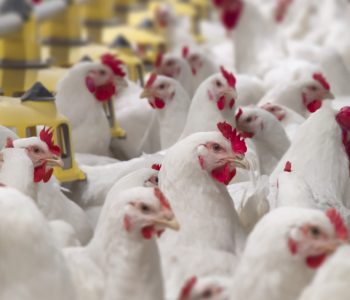Vitamin D3 in broiler breeders
The importance of focusing on the breeder’s nutrition to enhance the performance of the chick cannot be overstated.
Given that nutrition plays a crucial role in maximizing the potential of modern genetic lines, it is logical to allocate significant investments towards research and the development of solutions aimed at enhancing the return on investment in the performance of offspring from these breeders.
Eggshell quality
The quality of the eggshell is closely linked to the general well-being of the female, particularly her nutrition. Additionally, eggshell quality plays a pivotal role in the optimal functioning of the incubation process and the overall quality of the chicks.
ACTIVE FORM OF VITAMIN D
The active form of vitamin D, known as 1,25-dihydroxycholecalciferol (1,25(OH)2D3), plays a crucial role in breeder nutrition to improve shell conditions and thereby enhance the quality and performance of the baby chick
Figure 1. Action of calbindin in calcium absorption.
Figure 2. Skeletal structure of a bird. (Hy-Line Technical Bulletin, 2016).
Figure 3. Bone formation and resorption.
This mechanism highlights the importance of proper skeletal development and medullary bone formation, where calcium resorption and formation sites can be targeted.
The use of 1,25(OH)2D3 represents an interesting and more effective alternative to the use of inactive vitamin D3. Vitamin D3 needs to undergo hydroxylation in the liver and kidneys to reach its active form. It is also affected by the reduction of sex hormones which occurs under stressful situations or due to ageing.
There are many factors that can hinder the effective, consistent, and rapid production of calbindin from vitamin D3, making the use of 1,25(OH)2D3 in the feed of breeders an important strategy to ensure better egg quality.
EFFECT OF PANBONIS® USE
Impact of incorporating Panbonis® into the breeder’s diet on the body weight of the broiler chick.
The effect of 1,25(OH) on shell quality is a factor that may be directly related to the shell’s quality and its subsequent response to incubation conditions, leading to heavier chicks.
This mechanism highlights the importance of seeking better eggshell quality to improve the quality and weight of the broiler chick, ultimately enhancing the final outcome of poultry production through the positive correlation between the weight of the broiler chick and the weight of the processed chicken.
The mechanisms, concepts, and solutions found in breeder nutrition present an opportunity to increase the profitability of the entire chicken production process.
For more information visit: https://nuproxa.ch/en/
